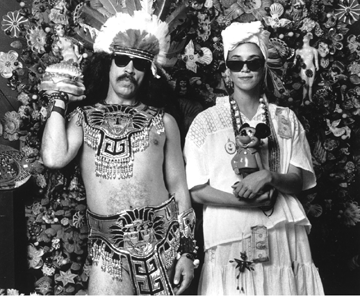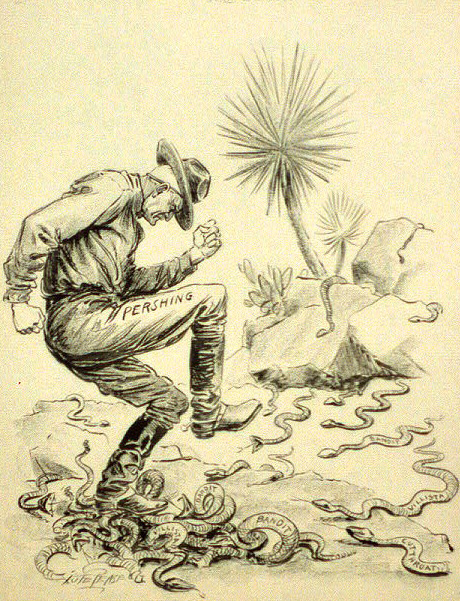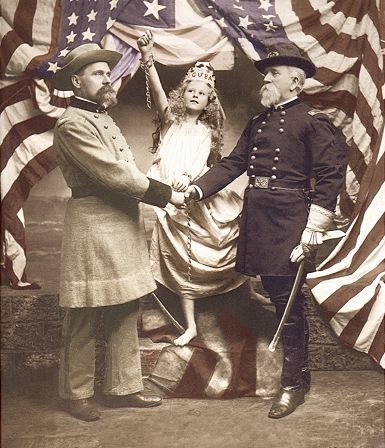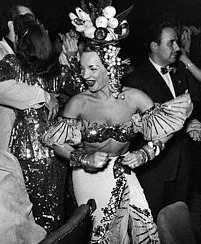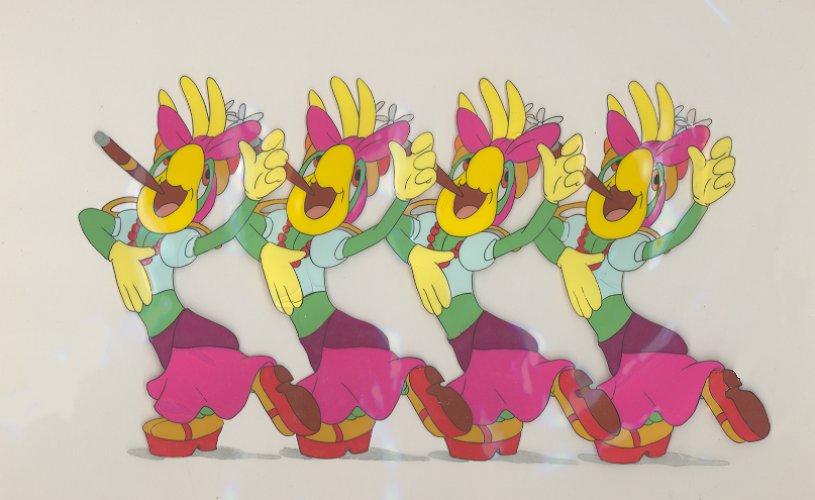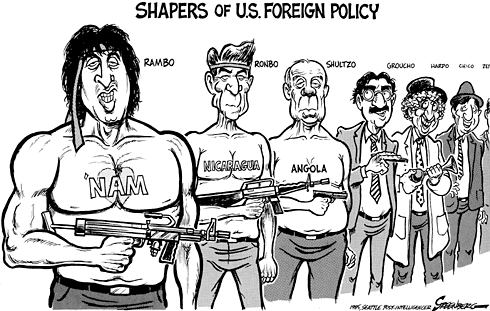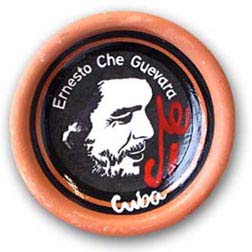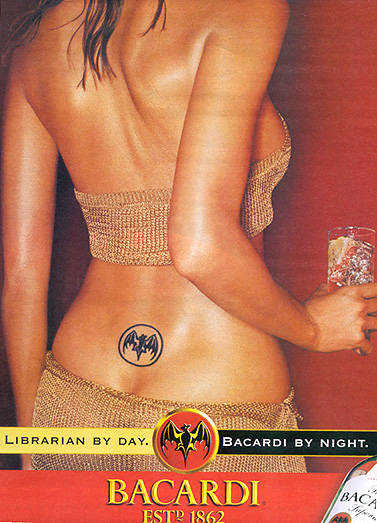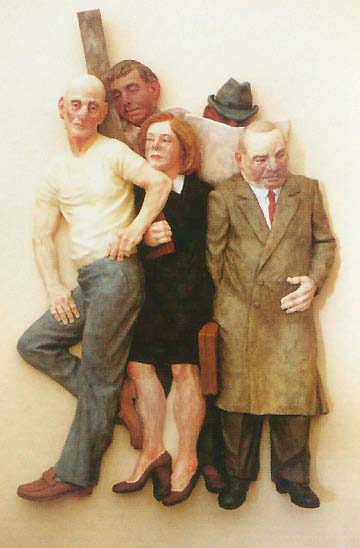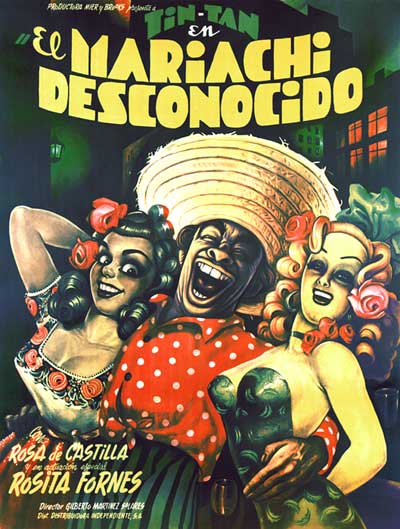
First Year Seminar: 175
How Images Matter: Latin America Through
U.S. Eyes
Mr. Volk
Rice 309, x8522
Office Hours: Monday 10-11 AM; Tuesday, 1:30-2:30 PM; Thursday, 11 AM - Noon and by appointment
Email: Steven.Volk@oberlin.edu
Course Management Sites
General Student Resources
News Sources on Latin America
General Sources on History
Books Recommended for Purchase
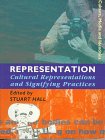

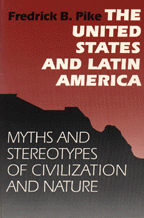
About the Course
How Images Matter began with a question I have asked myself for a long time. Why is it that the US public does not seem to care (according to polling statistics) when, over the years, Washington intervened, openly or covertly, to overturn governments in Latin America, often installing dictatorships and removing democracies (e.g. Guatemala, 1954, Chile, 1973)? Of course, there are many ways to approach this question. Perhaps "Americans" don't particularly care about what happens in other lands? [Notice that we already have bumped into one aspect of the problem: to speak of an "American" is in actuality to speak of the people who live in the "Americas," from northern Canada to the tip of South America. Yet, in the United States, when one speaks of an "American," one almost always thinks only of those from the United States.]
This could be an accurate assumption, but it seems to go quite oddly with the common (US) understanding that democracy is both a critical part of the US national identity and, at least since the Wilson era, an international goal of Washington policymakers. If we accept these last two points (at least in terms of public rhetoric), than we have to explain a certain cognitive dissonance by which public opinion appears both concerned with democracy and unconcerned with undemocratic outcomes in other countries including those that have been directly caused by actions taken in Washington.
Perhaps the answer is that the public does not know about the actions its government takes abroad and the consequences of those actions. It is probably fair to say that our government (as with most governments): (a) releases little current information about what it is doing abroad (e.g., most foreign policy records are kept confidential for at least 25 years, some are never released; (b) will "spin" its policies to conform with what it believes the public is most concerned with (e.g., national security), whether these are truly important or not; and, (c) relies on the fact that the public seems to have a remarkably short attention span once Washington and the media have decided to take "hot button" issues off the front pages (e.g. how many people have even the foggiest impression about Nicaragua, El Salvador, Grenada, or Panama, countries which supposedly threatened the US national security as late as the 1980s and early 1990s?).
These, and others, are persuasive arguments. But in contemplating this question, I felt it important to explore another, additional, explanation. My hypothesis entering this course is that the US public has come to accept that if democracy is the ultimate and universal goal, it is not always an appropriate goal for everyone. Sometimes this is understood in technical terms, as in the argument that the people of Iraq are not "ready" to hold elections because they lack needed resources (electoral registries, political party systems, voting booths, methods of campaigning, electricity, etc.). But, quite often, the argument revolves around a set of cultural propositions which suggest that people in other parts of the world simply lack the historical practice or cultural ability to be democratic. My interest here is not to suggest that resources or history do not matter (it is difficult to stage a vote when there are no lists of voters), but rather to question why we see others, who have likely governed themselves for quite a long time, as lacking the skills and culture needed for self-rule?
The key to this course lies in the word "see," because I will argue that the circulation of visual images is central in providing a large audience with a picture of a people who are in need of "our" help since "they" do not seem able to successfully govern themselves. The argument that we will be pursuing in this course is that over the course of more than a century, the visual imagery of Latin America that has been produced and circulated in the United States has often made the case that Latin Americans (and Latinos/as, for reasons we will explore) lack the necessary prerequisites for democratic rule.
This brings us to the first goal of the course, the development of critical visual methodologies: How does one "read" images with sophistication and insight? What is the relationship between the producer and the consumer of an image? How do technologies of visual production and reproduction shape the message, audience, and impact of an image? How do we read historical visual images and how do we understand history in visual imagery? Why is the visual so powerful? I would guess that throughout your schooling career so far you have gained a certain facility at textual literacy. You understand that reading is not just a process of "decoding," that there are other processes involved before one understands what happens in a written text. This course is designed to help you gain similar tools in the understanding of visual imagery, particularly as applied to historical studies (this is not an art course per se).
The second important goal of the course is, by exploring the history of US involvement in Latin America over the past 150 years via visual representations, to analyze the role of the visual in the shaping of public opinion. To do this, we will look at six key moments/problems in U.S.-Latin American history: Manifest Destiny and the westward push of US settlers into Mexican territory; the Spanish-American-Cuban-Filipino War of 1898; the period of heightened intervention in the Caribbean and Central America between 1900-1920; the Good Neighbor policy; the confrontation with revolution and revolutionaries beginning with the Cuban Revolution; and the period of Central American wars in the 1980s. It is quite important to understand that we will not be analyzing US policy in Latin America (i.e. why did Washington develop specific approaches -- I do that in my course on "The United States and Latin America"). Instead, we will be examining a variety of visual (and in some cases textual) messages about Latin America consumed by contemporary US audiences.
The third goal, implicit in what I have said above, is to understand that if imagery can be used to present negative representations of a subject population, it can also be a site of resistance to that representation -- indeed, the very same image can be read by some as disempowering and by others as liberating. If you're unsure what I mean, look at the photograph below of Guillermo Gómez-Peña and Coco Fusco. Here, in a nutshell, is an example of the complexity of visual analysis. Particularly as we move into postmodern imagery, advertising above all, we will see how stereotypes which have previously functioned to constrain are now deployed as irony in order to resist.
"The Postponed Event," Guillermo Gómez-Peña and Coco Fusco
Fourth, one goal for the course is to encourage you to think about what are interesting questions to ask and how to go about answering them. This course is designed to help me (and us) answer a question that I've thought about for a long time. I've structured it in a way that I think can help us answer the question, but we really won't know until we've done the work. To put it quite simply: don't expect me to give you an answer to this question since I don't have one yet. At the end of the course, hopefully, we'll all know something more about it.
And, finally, there are a number of goals for the course that are designed specifically to bring you into the academic endeavor at Oberlin College and to sharpen the skills that you will need during your four years here and as well as throughout your lives. There will be a lot of writing and oral discussion, as both of these are quite critical for intellectual engagement. You should strengthen your ability to find appropriate research materials (particularly visual materials) in the Oberlin library, in major research libraries, and via the Internet, and, of course, all of this should be in service of helping you develop your critical thinking skills (even as you help me develop my own).
COURSE MECHANICS
I. Assignments, Grading, Honor Code
Reading:
Reading is assigned for almost every week in the course. For the most part, the syllabus will tell you whether you need to have finished the reading assignment before the Monday or Wednesday class or what needs to be read for each session. The class can't function unless you do the reading on time.
Journal Writing:
You are expected to keep a "Journal" over the course of the semester. Many, if not all of you, are certainly experienced at journal writing. As one of the central features of the course is the way in which imagery impacts the viewer, and as this impact is quite often an unconscious one, I would like you to use your journal to reflect on images that you see, taking some time to think about what the creator of the images intended that you see as well as on the impact that the image had on you. You can draw on any visual image (television, movies, advertisements, newspapers, cartoons, etc.). These journals will be collected a number of times during the course of the semester, as well as at the end of the semester. They will not be graded except to note if they have not been written.
Posting questions to "Blackboard:"
For most classes, you will be expected to post 1-2 questions on the reading to "Blackboard." Note: don't post any questions that you wouldn't want to spend some time answering. (More on this during class.)
Formal writing assignments:
You will have four non-journal writing assignments over the course of the semester. I will require that you turn in at least one draft for each paper before the final draft. Preliminary drafts will not be graded, although the final assignments will.
Final Grade:
Your final grade will be determined as follows:
- Class participation: 25%
- First Paper: 10%
- Second Paper: 20%
- Third Paper: 20%
- Final Paper: 25%
Honor Code
Oberlin College is on the Honor Code. Information on what this means (e.g. cheating, plagiarism, fabrication) and your responsibilities as students can be found at the Honor Code site. You must sign the honor code on all written assignments.
II. ACCESSING MATERIALS FOR THE COURSE
There are a variety of ways in which you will be accessing the materials for this course:
1. Books: These can be purchased at the bookstore, purchased through an on-line bookseller (e.g. Amazon.com, etc.), obtained at the Reserve Desk of the library, or requested through OhioLink. [More on all of this in class].
2. Articles: These will be available:
Through Electronic Reserve which runs through the library's electronic website. First enter my name or the course number (fysp175). Click on this course and you will be taken to a dialog box where you must enter a password. Enter: fysp175 (all lower case). At that point you will be taken to a list of articles; just click on what you want to read, and it will open;
Directly by clicking on the link on this electronic syllabus (e.g. click on: Caballero's Way and you will be taken to the first reading for the course);
Through the "Blackboard" system. [Instructions for logging on to "Blackboard" can be found at: http://www.oberlin.edu/OCTET/Bb/login_enroll.htm. Once you are in to "Blackboard," you will find the readings under the "Course Documents" section.
Finally, some articles will be linked to major journals collections, usually at JSTOR. This will be directly linked into the electronic syllabus.
3. Visual Materials: These will be available either in the "Course Documents" section of "Blackboard," or on the internet. There is also a special page of visual links for this course which can be found at: Visual Resources for FYSP-175.
NB: If you are having any problems getting to the reading/visual materials, please see me (or send me an email) quickly! Don't wait.
Sources on Latin America
I have compiled a great many Internet sources and resources on Latin America at Sources and Resources on Latin America. This resource includes a variety of materials from the history of Latin America to organizations and publications of interest to activists working on Latin American issues. When using the on-line version of the syllabus, simply click on “Sources and Resources.”
Books Recommended for Purchase
Stuart Hall, ed., Representation: Cultural Representations and Signifying Practices (London: Sage Publications), 1997.
Frederick B. Pike, The United States and Latin America: Myths and Stereotypes of Civilization and Nature (Austin: University of Texas Press), 1992. [NOTE: This book will not be at the bookstore. Either you can get it through an on-line bookseller or through OhioLink.]
Marita Sturken and Lisa Cartwright, Practices of Looking: An Introduction to Visual Culture (New York: Oxford University Press), 2001.
"Still Coming" 1916 - An angry General Pershing in Mexico stomps a nest of rattlesnakes, called bandits and "villistas," followers of Pancho Villa (Lute Pease, artist. Library of Congress, Prints & Photographs Division)
SYLLABUS
INTRODUCTION
Sept. 3 (Wed): Introduction and Overview
Reading:
O'Henry, "The Caballero's Way"
UNIT I: REPRESENTATION
Much of the content of this unit will concern questions of representation and an introduction to visual methodologies. After a quick look at representation in language and issues of semiotics, we will then turn to visual literacies and introduce various types of visual information, particularly photography and film.
Sept. 8, 10: Introduction to Visuality and Culture
Reading (finish reading by Wednesday):
Stuart Hall, "Introduction," and "The Work of Representation," in Stuart Hall, ed., Representation: Cultural Representations and Signifying Practices (Milton Keynes, UK: The Open University, and London: Sage Publications, 1997), pp. 1-74.
René Decartes, "Optics," in Nicholas Mirzoeff, ed., The Visual Culture Reader (London and New York: Routledge, 1998), pp. 60-65. [ERes]
Fielding Mellish (Woody Allen) as guerrilla leader in "Bananas" (1971)
First Assignment: The first draft of your first assignment will be due in class on Sept. 15; the final draft should be turned in during class on Sept. 22.
Sept. 15, 17: Practices of Looking
Reading (finish reading by Wednesday):
Peter Hamilton, "Representing the Social: France and Frenchness in Post-War Humanist Photography," Hall, ed., Representation: Cultural Representations and Signifying Practices, pp. 75-150.
Marita Sturken and Lisa Cartwright, Practices of Looking: An Introduction to Visual Culture (New York and Oxford: Oxford University Press, 2001), Introduction and Chapter 1 (pp. 1-44).
Sept. 22, 24: Viewers/Spectators: Representing the Other, Notions of Stereotype
Sept. 22 - Discussion: Viewership and the "gaze"
Reading:
Sturken and Cartwright, Practices of Looking, Chs. 2-3 (pp. 45-108).
Sept. 24 - Discussion: The idea of the "other."
Reading:
Stuart Hall, "The Spectacle of the 'Other'," in Hall, ed., Representation: Cultural Representations and Signifying Practices, pp. 223-290.
Charles Ramírez Berg, "Categorizing the Other: Stereotypes and Stereotyping," Latino Images in Film: Stereotypes, Subversion, Resistance (Austin: University of Texas Press, 2002), pp. 13-37. [ERes]
"A Little More Effort, Señor," Hugh Hutton, Philadelphia Inquirer (1961) from John J. Johnson, Latin America in Caricature (Austin: University of Texas Press, 1980), p. 67.
UNIT II. PROBLEMS IN REPRESENTATION: KEY MOMENTS IN U.S.-LATIN AMERICA RELATIONS
Optional Background Reading: Eric Alterman, Who Speaks for America? Why Democracy Matters in Foreign Policy (Ithaca and London: Cornell University Press, 1998), Section I: The Rise and Fall of a Liberal Republic: A Short History (pp. 23-97). [ERes]
Sept. 29, Oct. 1: The Western Push and the Notion of the Frontier: Nature, Culture, and Manifest Destiny
Sept. 29 - Discussion: Frontier imagery (images on Blackboard)
Reading:
John Gast, "American Progress" (click for larger)
Oct. 1 - Discussion: Frederick Pike's argument
Reading (to be completed by Wednesday class):
Frederick B. Pike, The United States and Latin America: Myths and Stereotypes of Civilization and Nature (Austin: University of Texas Press, 1992), Preface and Chs. 1-4 (xiii - 153).
Oct. 8: Technologies of Looking and the Spanish-Cuban-American-Filipino War
Oct. 6 - NO CLASS
Oct. 8 - What do we learn by looking at images of the Spanish-Cuban-American-Filipino War?
Reading:
Sturken and Cartwright, Practices of Looking, Ch. 4 (pp. 109-150) and Ch. 8 (pp. 279-290 only).
Pike, The United States and Latin America, Ch. 5 (pp. 154-192). [Skim]
Laura Wexler, "What a Woman Can Do With A Camera," Tender Violence: Domestic Visions in an Age of US Imperialism (Chapel Hill: University of North Carolina Press, 2000), pp. 15-51.
Optional:
William McKinley, "War Message" (1898)
William Jennings Bryant, "America's Mission," Feb. 1899
Tableau representing Confederate and Union reconciliation to free Cuba - Spanish American War (photographer unknown)
Second Assignment: The first draft of your second assignment will be due in class on Monday, Oct. 13; the final draft should be turned in during class on the Monday following Fall Break, Oct. 27.
Oct. 13, 15: Classic and New Imperialism: US Policy in the Caribbean and the Philippines from Roosevelt through Wilson. Caricatures, Editorial Cartooning, Poster Work
Oct. 13 - Discussion of Pike: US Policy from Roosevelt to Wilson
Reading:
Pike, The United States and Latin America, Chs. 6-7 (pp. 193-257).
Woodrow Wilson, "Peace without Victory: Address to the United States Senate," January 22, 1917
Oct. 15 - Latin America in Caricature
Reading:
Images from John J. Johnson, Latin America in Caricature (Austin: University of Texas Press), 1980. [Images posted to "Course Documents" on "Blackboard"]
Uncle Sam holding "Porto Rico's" hand: "And to think that bad boy [Cuba] came near being your brother," Chicago Inter Ocean, 1905
FALL BREAK
Oct. 27, 29: Film and Mass Media - The "Latin" Image at Home and Abroad
Oct. 27: Film and Mass Media - Discussion of Sturken and Cartwright
Reading:
Sturken and Cartwright, Practices of Looking, Ch. 5 (pp. 151-188).
Oct. 29: Creation of the Hollywood Stereotype
In-class screening: The Bronze Screen: 100 Years of the Latino Image in Hollywood
Reading:
Charles Ramírez Berg, "A Crash Course on Hollywood's Latino Imagery," Latino Images in Film: Stereotypes, Subversion, Resistance (Austin: University of Texas Press, 2002), pp. 66-86. [ERes]
Allen L. Woll, "The Attack of the Greasers," The Latin Image in American Film, rev. ed. (Los Angeles: UCLA Latin American Center Publications, 1980), pp. 6-28. [ERes]
Chon Noriega, "Citizen Chicano: The Trials and Titillations of Ethnicity in the American Cinema, 1935-1962," in Clara E. Rodríguez, ed., Latin Looks: Images of Latinas and Latinos in the US Media (Boulder, CO: Westview Press, 1997), pp. 85-103. [ERes]
Carmen Miranda
Nov. 3, 5: Making Up IsHard to Do. Uncle Sam as the Good Neighbor
Nov. 3 - Three Caballeros
View Disney's "Three Caballeros" (1945) outside of class (video available at library). Discussion of movie.
Reading:
Pike, The United States and Latin America, Ch. 8 (pp. 258-296).
Julianne Burton, "Don (Juanito) Duck and the Imperial-Patriarchal Unconscious: Disney Studios, the Good Neighbor Policy and Packaging of Latin America," in Andrew Parker, Mary Russo, Doris Sommer and Patricia Yaeger, eds., Nationalism and Sexualities (New York and London: Routledge, 1992), pp. 21-41. [ERes] [NOTE: Enter "hist294" as the password to get in to this reading]
Nov. 5 - Hollywood and the Good Neighbor
Reading:
Allen L. Woll, "Hollywood's Good Neighbor Policy," The Latin Image in American Film, rev. ed. (Los Angeles: UCLA Latin American Center Publications, 1980), pp. 53-75. [ERes]
Optional: Scott Schaffer, "Disney and the Imagineering of Histories," in Postmodern Culture VI:3 (May 1996).
José Carioca (from "Three Caballeros")
Third Assignment: The first draft of your third assignment will be due in class on Nov. 10; the final draft should be turned in during class on Nov. 17.
Nov. 10, 12: Confronting Revolution and Revolutionaries: Cuba, Dominican Republic, Grenada
Reading:
Pike, The United States and Latin America, Ch. 9 (pp. 297-328).
Thomas C. Mann Oral History Interview (on file at Lyndon B. Johnson Library: Oral History Collection). Mann was the US Ambassador to Mexico (1961-1963); Assistant Secretary of State for Inter-American Affairs (1964), and Under-Secretary of State for Economic Affairs (1965-66). He was a key Latin American expert in the Kennedy and Johnson years. Focus on the US intervention into the Dominican Republic in this interview. Go to the very bottom of page 15 (on your browser, page 11 of the actual transcript) and read through the middle of page 20 (pg. 16 of the actual transcript).
Address to the Nation on Events in Lebanon and Grenada (Oct. 27, 1983)
A Summary and Analysis of the Report of the National Bipartisan "Kissinger" Commission on Central America, January 1984 (prepared by the Congressional Research Service). While not the verbatim report, it is very close to the original (which is not available on-line). Read from CRS- PAGE 7 through CRS- PAGE 18
"Shapers of US Foreign Policy," Steve Greenberg
Nov. 17, 19: How Far is Kansas City from Washington? Marketing the Central American Wars
Radio Address to the Nation on Central America (March 24, 1984)
Remarks at an Exhibit of Weapons Captured in Central America (March 13, 1986)
Radio Address to the Nation on the Situation in Nicaragua (March 15, 1986)
Images from the Reagan Library Archive (See, in particular, "Iran Contra" and "Lebanon and Grenada")
For those who speak Spanish: "Embajadora de E.U.A. advierte contra FMLN," and “Peligraría inversión americana,” La Prensa Grafica (June 2003).
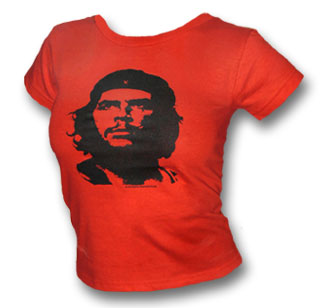
"Che" shirt Collectible "Che" Plate
Nov. 24, 26: Selling Latin America, revolution and Latinidad in a Postmodern World. Advertising and the Contemporary Marketing of Latin America.
Nov. 24 - Advertising
Reading:
Sturken and Cartwright, Practices of Looking, Ch. 6 (pp. 189-236).
Anne McClintock, "Soft-Soaping Empire: Commodity Racism and Imperial Advertising," in Nicholas Mirzoeff, ed., The Visual Culture Reader (London and New York: Routledge, 1998), pp. 304-316. [ERes]
Arlene Dávila, "Images: Producing Culture for the Market," Latinos, Inc. The Marketing and Making of a People (Berkeley: University of California Press, 2001), pp. 88-125 and "Screening the Image," pp. 126-152. [ERes]
Optional: Raymond Williams, "Advertising: the Magic System," Problems in Materialism and Culture [Course Documents: Williams Advertising]
Nov. 26 - Postmodernity - "Blame it on Lisa" (Discussion of a Simpsons episode (first aired March 31, 2002).
Reading:
Sturken and Cartwright, Practices of Looking, Ch. 9 (pp. 315-348).
Bacardi Rum advertising: "Librarian by day; Bacardi by night"
UNIT III: Bringing it Home. Locating Resistance in Visual Culture - Democracy and Foreign Policy Reconsidered
Dec. 1, 3: Public Opinion, Democracy, and Foreign Policy
In this section we will be deepening our discussion on what is public opinion and how visual messages shape it, and we will further explore the "directionality" of the linkage between public opinion and foreign policy, suggesting ways in which power shapes culture and moments of resistance in that process.
Dec. 1 - Discussion: Can we locate resistance in "public opinion?"
Reading:
James Mill, "Liberty of the Press," [Course Documents: Mill Liberty]
Selections from Walter Lippmann, Public Opinion (1922). [Course Documents: Lippmann Public]
John Dewey, "Public Opinion" (review of Walter Lippmann, Public Opinion), The New Republic, May 3, 1922 (286-288. [Course Documents: Dewey Public]
Dec. 3 - Discussion: Does "public opinion" have an impact on foreign policy?
Reading:
Contrast the views of:
Gabriel A. Almond, "World Leadership and Human Material," The American People and Foreign Policy (Westport, CT: Greenwood Press, 1950), 3-10. [ERes]
Ole R. Holsti, "Introduction," Public Opinion and American Foreign Policy (Ann Arbor: University of Michigan Press, 1996), pp. 1-21. [ERes]
Douglas C. Foyle, "Linking Public Opinion and Foreign Policy," Counting the Public In: Presidents, Public Opinion and Foreign Policy (New York: Columbia University Press, 1999), pp. 1-29. [ERes]
Andrew Benyei, "Public Opinion," mixed media
FINAL ASSIGNMENT: The first draft for your last assignment is due during class on December 8.
Dec. 8, 10: The Problem of Democracy in Contemporary US Foreign Policy - Conclusions
"Americans are a free people, who know that freedom is the right of every person and the future of every nation. The liberty we prize is not America's gift to the world, it is God's gift to humanity." George W. Bush, State of the Union Address, Jan. 28, 2003.
Reading:
Pike, The United States and Latin America, Ch. 10 (pp. 329-365).
The Emperor's New Clothes, Leif Zetterling (Sweden)
FINAL ASSIGNMENT: The final draft of your final assignment is due at 4:30 PM on Dec. 15, with the possibility of an extension until Thursday, Dec. 18 at 7:00 PM. NO work will be accepted after that date unless you request an OFFICIAL incomplete in the course.
